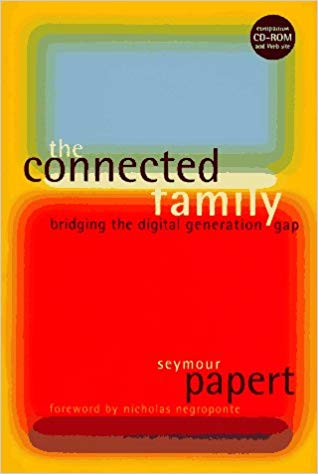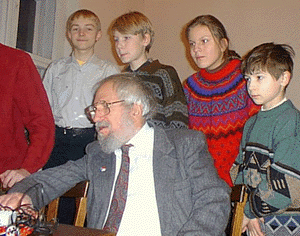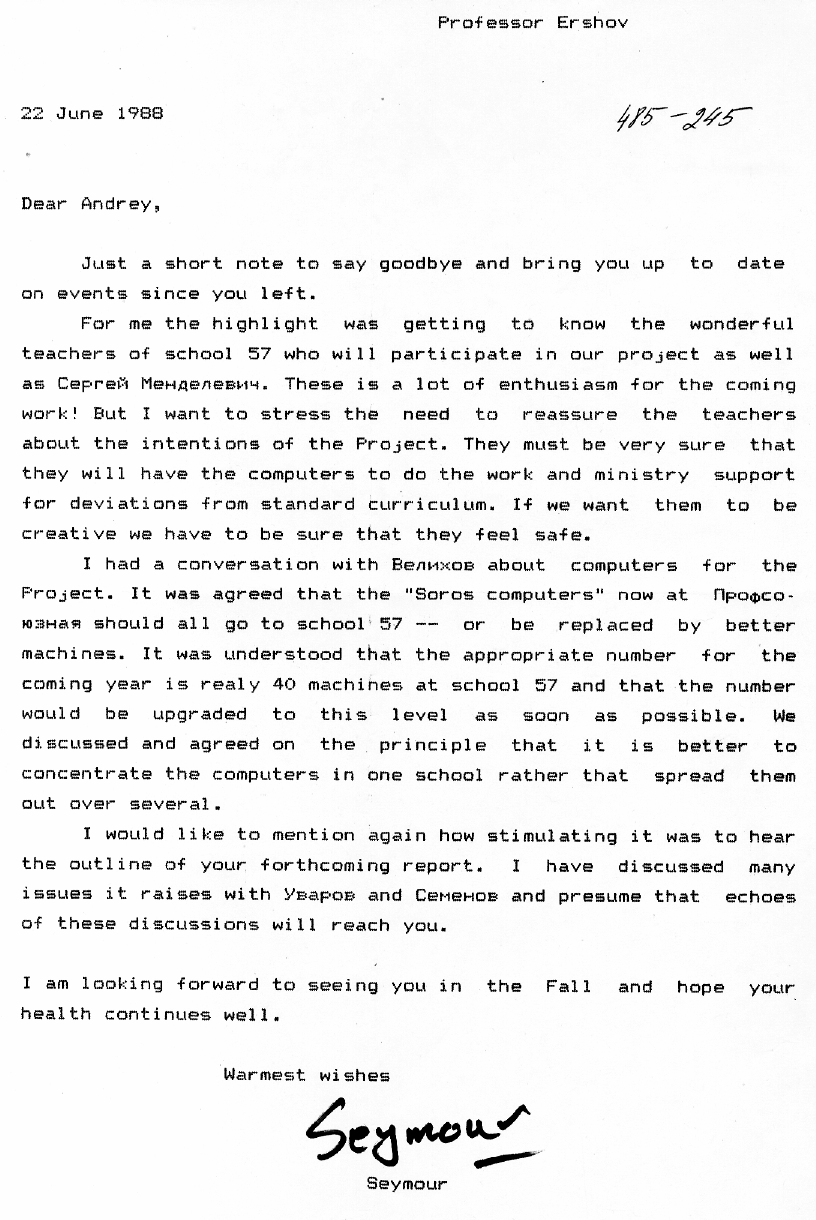Seymour Papert: The Delightful Discovery of “Nothing”
- Transfer

This story is an excerpt from the book United Family: Bridging the Gap with the Digital Generation (Longstreet Press, 1996).
Almost all parents think that it is useful for children to engage in some kind of activity called “learn math”, and therefore they are purchased with software that “teaches children to math”. Everything seems to be in order. But what is wrong is their idea of what mathematics is, and why children should study it. It is absolutely superficial: it's the same as buying food for your children, not knowing the difference between healthy and unhealthy food.
In my opinion, 99% of software sold, “teaching children in mathematics,” is “harmful” mathematics.
Since this is a pretty strong statement, you have the right to ask - in fact, you must ask - about my qualifications. Well, you can just google and you will learn about my diplomas ... for example, about a doctoral degree in mathematics or that I am a professor at the Faculty of Mathematics at the Massachusetts Institute of Technology. However, I would like to be evaluated differently: listening to my stories with a mind open to the new and deciding whether they make sense to you. The great thing about this method is that it is very easy for readers to try on different points of view ... and at the same time stick to their own.
In childhood, someone told me that "the Indians invented a zero."I remember how I thought at that moment what they really thought up. In the sense - "came up with a zero"? I remember, then I decided that they invented a round symbol, which we draw to denote zero. Many years later, one girl from kindergarten, appropriately named Don, helped me to understand that these cunning Indians had invented.
Don worked at that time (or played ... I do not see much difference between these things when they are done well) on a computer using one of the versions of the Logo, which allowed her to control the speed of moving objects on the screen. For example, by entering the SETSPEED 100 command, it caused them to move very quickly, or SETSPEED 10 to slow them down a lot. She explored some variations of speeds that seemed important to her, for example, 55, and then moved to very slow speeds, for example, 5 and 1.
At some point, she suddenly became very excited and at first called her friend, and then the teacher, to show something interesting. It turned out that I was present at this lesson, and at the first moment I was just as puzzled as the teachers: we could not understand why Don was reacting this way. Nothing happened on its screen.
And then awareness slowly descended on me like a dawn. And the thing was that Nothing (with a big "H") did not happen. She typed SETSPEED 0, and the moving object stopped. She tried to explain to us, but didn’t have enough language to make it easy for her. Those objects that "stood motionless", still "moved", they moved at a speed of zero. She was struck by the realization that zero is also a number, speed zero is still a measure of speed, and distance equal to zero is still a measure of distance and so on. Up to this point, zero for her was rather a lack of a number. Nothing. And suddenly he joins the company of the remaining numbers.
Such discoveries are just a part of the “learning mathematics”. I have seen other children, and even some adults were amazed that in the version of the Logo that Don used, you can enter the command SETSPEED -10, and the object will move backwards. Negative numbers are also numbers, and negative speeds are also speeds!
Addition

Peipert looks at logo-projects made by children in the Papert center of St. Petersburg.
I remembered this story and chose it as the story of this week for the reason that I came to Russia, and it so happened that it was February outside the window. So, yesterday I was told that the temperature had risen from 10 to 20 ... "20 degrees of frost." No one here says “minus 20” or even “20 below zero”. Everything (at least in the temperature range) is expressed positively. Or it would be more correct to say “relatively”, and this word is used here in a truer sense than most people usually give it: it allows us to consider a descent downwards as an ascent.
Translation: Olya Mars
Still
“Neither mathematics nor man can be fully understood, being separated from each other.”
- Seymour Papert
- 0 March. Seymour Papert and body programming training (and unconscious)
- Fundamentally Change the Way Kids Learn ( Seymour Papert: How the computer changed us and our children )
- Letter of Seymour Papert Yershov

- Seymour Papert " Mathematical Unconscious "

About #philtech
#philtech (технологии + филантропия) — это открытые публично описанные технологии, выравнивающие уровень жизни максимально возможного количества людей за счёт создания прозрачных платформ для взаимодействия и доступа к данным и знаниям. И удовлетворяющие принципам филтеха:
1. Открытые и копируемые, а не конкурентно-проприетарные.
2. Построенные на принципах самоорганизации и горизонтального взаимодействия.
3. Устойчивые и перспективо-ориентированные, а не преследующие локальную выгоду.
4. Построенные на [открытых] данных, а не традициях и убеждениях
5. Ненасильственные и неманипуляционные.
6. Инклюзивные, и не работающие на одну группу людей за счёт других.
Акселератор социальных технологических стартапов PhilTech — программа интенсивного развития проектов ранних стадий, направленных на выравнивание доступа к информации, ресурсам и возможностям. Второй поток: март–июнь 2018.
Чат в Telegram
Сообщество людей, развивающих филтех-проекты или просто заинтересованных в теме технологий для социального сектора.
#philtech news
Телеграм-канал с новостями о проектах в идеологии #philtech и ссылками на полезные материалы.
Подписаться на еженедельную рассылку
1. Открытые и копируемые, а не конкурентно-проприетарные.
2. Построенные на принципах самоорганизации и горизонтального взаимодействия.
3. Устойчивые и перспективо-ориентированные, а не преследующие локальную выгоду.
4. Построенные на [открытых] данных, а не традициях и убеждениях
5. Ненасильственные и неманипуляционные.
6. Инклюзивные, и не работающие на одну группу людей за счёт других.
Акселератор социальных технологических стартапов PhilTech — программа интенсивного развития проектов ранних стадий, направленных на выравнивание доступа к информации, ресурсам и возможностям. Второй поток: март–июнь 2018.
Чат в Telegram
Сообщество людей, развивающих филтех-проекты или просто заинтересованных в теме технологий для социального сектора.
#philtech news
Телеграм-канал с новостями о проектах в идеологии #philtech и ссылками на полезные материалы.
Подписаться на еженедельную рассылку
